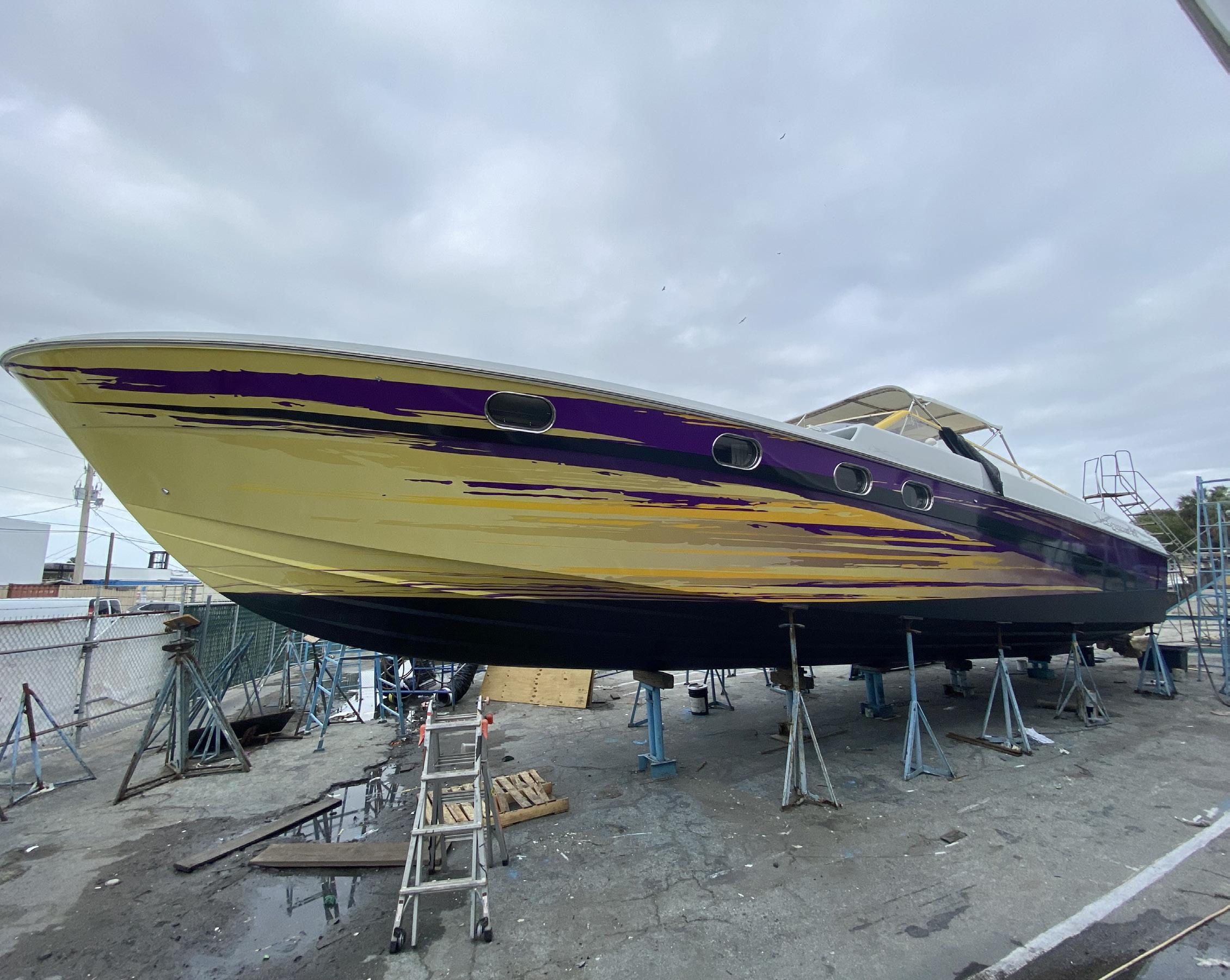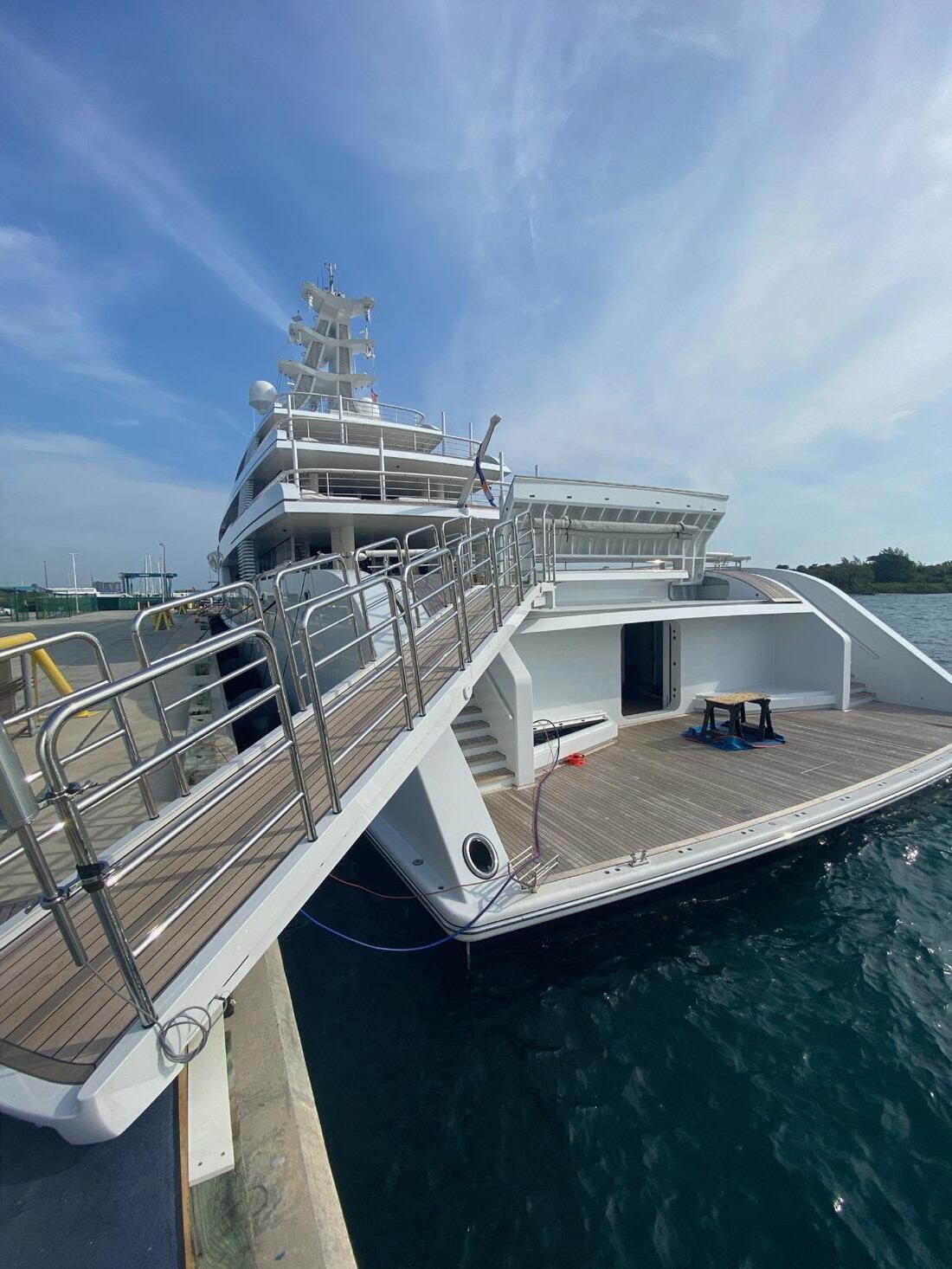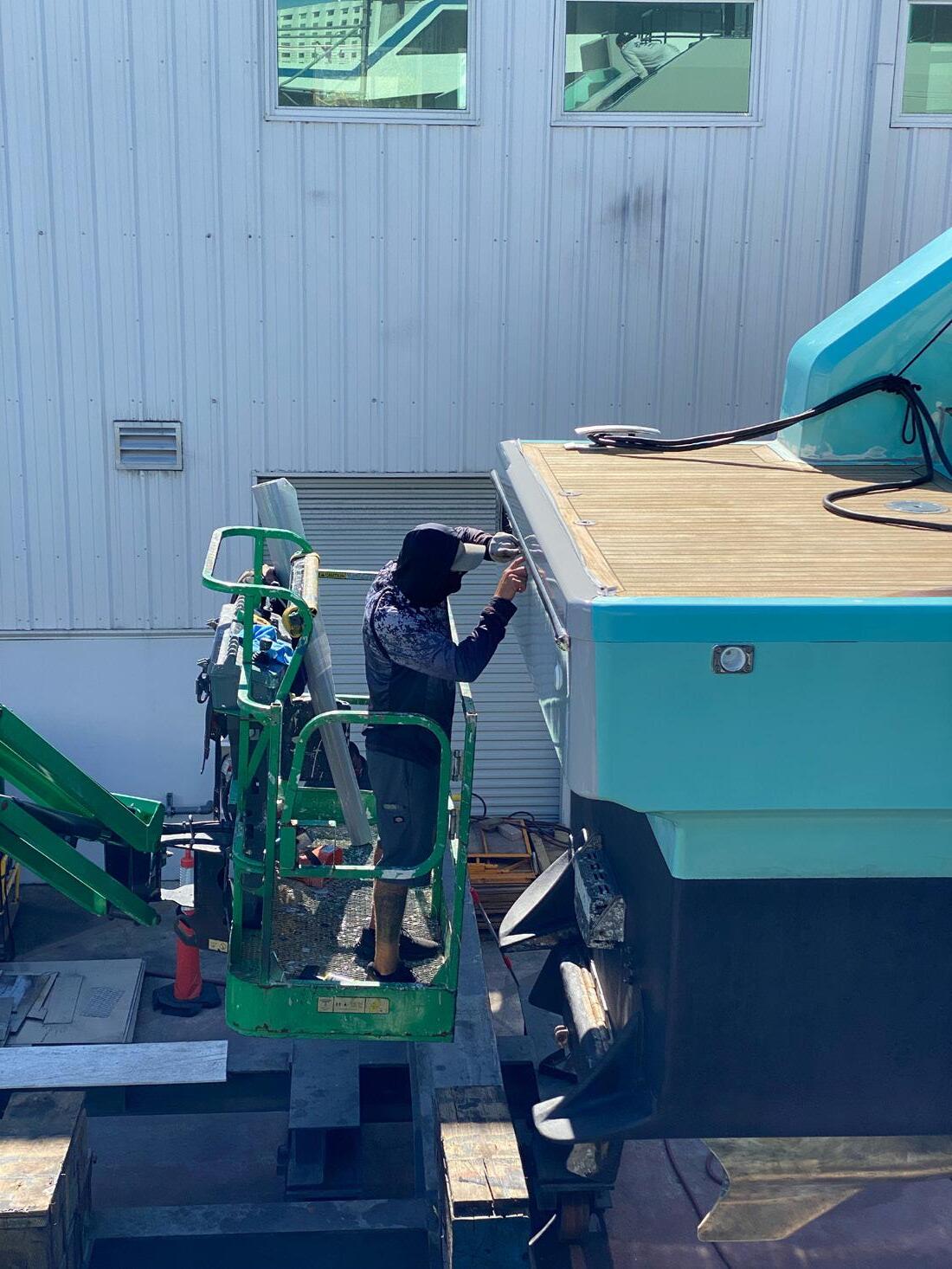
5 minute read
The of Boat Wraps Do’s Don’ts
By Albert Hatfield
The marine industry is absolutely enormous and we can be a true asset to the more than 17 million boats and Yachts in the United States alone. One thing they all have in common is that they take a lot of constant maintenance just to stay afloat, let alone look good…. That's where we come to the rescue. Through the proper application of the right product, we can solve a fuckton of problems for customers.
It’s not a hard sale. Boat wrapping offers a host of benefits, from cost savings ( on average is 1/3 the price of paint or gel coat) and customization to enhanced protection and ease of maintenance. Whether you’re looking to refresh your boat’s appearance, protect its surface, or boost its resale value, a vinyl wrap provides a practical and stylish solution. As more boat owners recognize these advantages, the popularity of boat wrapping continues to rise, creating a need for wellinformed and talented marine wrap specialists.
In 2014 we opened OceanWraps a division of our company dedicated to the marine industry. Over the last 20-plus years, I have personally wrapped more than 1000 marine craft-related items, like boat hulls, interiors, walls, countertops/ bar tops, handrails, transoms, and a bunch of other stuff. One time even an anchor. My goal is to be an asset to the owner, crew or broker and make their life better through vinyl and PPF.

So a few things to deal with:
Size - it does in fact matter. When it comes to size, it’s about management being able to handle 30 to 150 feet of material hanging freely is daunting at first, but depending on the film and temperature you may need to pull a few feet at a time and apply or bridge the material between the rubber rail and the bottom of the hall. This gives you time to come back and work with the material in sections without making contact with the surface.
Environment - I’m not talking about hippy shit, I mean the conditions of your installation area. Will you be in a boat barn, or in the sun, on the water or on dry land. All these things you must know ahead of time, so you can price the job accordingly. They all have their own issues. In South Florida, heat is something that we deal with almost year-round and something that you have to take into consideration when taking on these projects. Stay hydrated stay covered up from the sun, sunscreen, and protect yourself and your crew. Don’t forget these little expenses add up and need to be factored into your pricing as well. Trash - This is super important and depending on installation location it can be challenging it keep track of it all. Make sure you or your crew roll up your backing paper. This stops you from taking up all the space in the dumpster and pissing off the marina or shop that you’re working at.


Design - You must get a good designer with knowledge of the shape of a hull. In my experience, it’s important to make sure that all the text and graphics are not near the edges and are straight. Do not try to curve them in the print to the shape of the hull. Leave it in one large rectangle and manually manipulate the film as needed Keep the important stuff away from the edges. Give yourself room to manage the print. Boat shapes vary and are always a funky odd shape so the film takes some manhandling to get it right.
Decorum - If you ever want repeat business, you must learn proper boat/ yacht etiquette. It’s important not to piss off customers before getting on the boat. It is also important to learn, nautical terms that describe different portions of the boat due to the fact that that’s what people will be telling you when you discuss their project with them.
• Bow: The front of the boat.
• Stern: The rear of the boat.
• Port: The left side of the boat when facing forward.

• Starboard: The right side of the boat when facing forward.
• Helm: The area from which the boat is steered.
• Deck: The flat surface covering the hull of the boat.
• Cabin: The enclosed space inside the boat, used for living and sleeping quarters.
• Galley: The kitchen area on a boat.
• Head: The bathroom on a boat.
• Hatch: An opening in the deck or cabin roof for access or ventilation.
• Cleat: A fitting on which a rope can be fastened.
• Beam: The width of the boat at its widest point.
• Draft: The depth of water a boat needs to float.
• Fender: A cushion placed between the boat and a dock or another boat to prevent damage.
• Transom: The flat surface forming the stern of a boat.
I hope this helps take away some of the fear of boat wrapping. It’s a great gig and boat people spend money, so that next job is probably on the boat sitting right next to the one you’re wrapping.
Albert Hatfield CEO, Fifty Nine Fifty Wraps / OceanWraps











